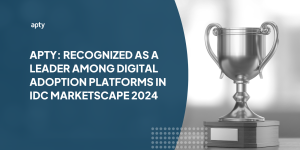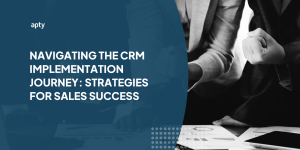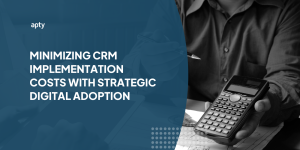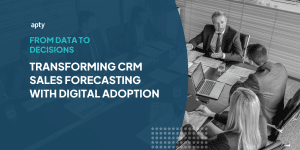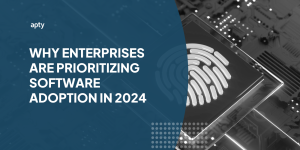The strategic integration of Enterprise Resource Planning (ERP) systems transcends a mere technological upgrade; it represents a vital step toward comprehensive business transformation. Achieving success in ERP implementation hinges not only on the selection of the right technology but also on mastering the art of seamless integration and adoption across an organization, underscored by choosing appropriate ERP implementation strategies.
Deploying an ERP system can significantly enhance a company’s operations, with reports indicating improvements in operational efficiency by up to 95%. Moreover, such implementations can lead to a reduction in operating and administrative expenses by over 20%. However, the path to success is challenging. According to G2, approximately 50% of ERP installations fail on their first attempt, and 64% of ERP projects exceed their budget. Further, 30% of these installations take longer than expected, potentially leading to substantial financial losses and operational disruptions.
The global ERP software industry is poised for rapid growth, estimated to reach $78.4 billion by 2026, with a market value of $49.5 billion projected by 2025.
Digital Adoption Platforms (DAPs) have emerged as game-changers in this domain. By enhancing user experience and adoption rates through contextual, in-app, personalized guidance, DAPs critically influence the success of ERP implementations. They effectively tackle one of the primary challenges in ERP projects: the complexity of user adoption. Notably, 78% of companies with successful ERP implementations attribute their success to effective change management and comprehensive employee training programs, reflecting a substantial positive impact on organizational efficiency post-ERP system implementation. The role of DAPs in simplifying and streamlining this process is indispensable.
With this foundational understanding, let’s delve into the strategies that can be employed to implement an ERP system successfully in your organization.
Read More: ERP Adoption – 5 Lethal Mistakes to Avoid
ERP Implementation Stages
Implementing an ERP system involves six main stages that are usually carried out over several months or even years. This process should start before you finalize your decision on which product to purchase, and it should continue even after the initial deployment of your chosen system.

These stages are crucial in ensuring a successful ERP rollout, and understanding each phase is vital for any organization embarking on this journey.
1. Project Planning and Preparation
- Objective Setting: The process begins with defining clear objectives and scope for the ERP implementation. This includes understanding the business processes that the ERP will impact and setting measurable goals.
- Resource Allocation: Assigning a dedicated team for the project, including internal stakeholders and external consultants, is crucial. This team will drive the project from inception to completion.
- Timeline Establishment: Develop a realistic timeline for the project, factoring in all stages of implementation.
2. Requirements Analysis and ERP Selection
- Needs Assessment: Conduct a thorough analysis of business needs, involving inputs from various departments to ensure the ERP solution aligns with organizational goals.
- Vendor Selection: Evaluate ERP vendors based on the organization’s requirements, budget, and compatibility with existing systems.
- Software Customization Needs: Identify any specific customizations or integrations needed in the ERP software to meet unique business processes.
3. Design and Development
- System Design: Develop a blueprint for configuring and customizing the ERP system.
- Data Preparation: Prepare the data for migration, including cleaning, mapping, and validation.
- Customization and Integration: Begin customizing the ERP software and integrating it with other systems as necessary.
4. Testing and Training
- System Testing: Rigorously test the ERP system to ensure it functions as expected. This includes unit testing, system testing, and user acceptance testing.
- Training Programs: Develop and implement comprehensive training programs for users tailored to different roles within the organization.
- Feedback Incorporation: Use feedback from the testing phase to make necessary adjustments.
5. Deployment and Go-Live
- Implementation Strategy: Decide on a deployment strategy, whether a big-bang approach or a phased rollout.
- Go-Live Support: Provide extensive support to users during the initial go-live period to address any immediate challenges.
- Performance Monitoring: Monitor the system’s performance closely post-go-live to ensure stability and efficiency.
6. Post-Implementation Review and Support
- Evaluation: Conduct a post-implementation review to assess the project’s success against initial objectives.
- Continuous Improvement: Implement a plan for ongoing improvements and updates to the ERP system.
- Long-term Support Structure: Establish a long-term support structure for users to ensure the ERP system continues to meet the organization’s evolving needs.
Learn More: ERP Implementation Plan: 10 Key Phases & Best Practices
ERP Implementation Strategies
After laying out the critical stages of ERP implementation, it’s essential to focus on strategies to make the process more efficient and effective. The following strategies are instrumental in navigating the complexities of ERP implementation and ensuring its success.

Stakeholder Engagement and Communication
- Early Involvement: Involve key stakeholders from the outset to ensure alignment with business goals and to address any resistance to change.
- Regular Communication: Maintain clear and continuous communication throughout the project lifecycle to keep all parties informed and engaged.
Customization vs. Standardization
- Balance Customization: While customization can align the ERP system with business processes, over-customization can increase costs and complexity.
- Leverage Standardization: Standardize processes wherever possible to fully utilize the ERP system’s native functionalities.
Data Management
- Data Clean-Up: Prioritize cleaning and organizing data before migration to avoid data integrity issues.
- Data Migration Strategy: Develop a comprehensive data migration strategy that includes mapping, testing, and validation.
Change Management
- Change Management Plan: Develop a robust change management plan to address the human aspect of ERP implementation, including training, support, and managing resistance.
- Organizational Readiness: Assess and prepare the organization for change to minimize disruption and ensure a smoother transition.
Effective Project Management
- Strong Leadership: Ensure strong project leadership and governance to steer the project in the right direction and make timely decisions.
- Project Monitoring: Implement rigorous project monitoring and control mechanisms to keep the project on track and within budget.
User Training and Support
- Comprehensive Training: Offer comprehensive training programs tailored to different user groups’ needs.
- Ongoing Support: Provide continuous support post-implementation, including helpdesks, user manuals, and online resources.
Testing and Quality Assurance
- Thorough Testing: Conduct thorough testing at various stages of the implementation, including unit testing, system integration testing, and user acceptance testing.
- Feedback Loop: Create a feedback loop to continuously improve the system based on user input and testing results.
Phased Rollout
- Pilot Testing: Consider starting with a pilot implementation to test the system in a controlled environment.
- Phased Approach: Implement the system in phases to manage risks and learn from each phase before full-scale implementation.
Post-Implementation Review
- Performance Metrics: Establish clear performance metrics to evaluate the success of the ERP implementation.
- Lessons Learned: Conduct a post-implementation review to gather lessons learned and apply them to future projects or system enhancements.
These strategies offer a comprehensive approach to ERP implementation, addressing the technical, organizational, and human factors contributing to such projects’ success or failure. By adhering to these strategies, organizations can significantly increase their chances of a successful ERP implementation.
Delve More: 9 High-Profile ERP Implementation Failures (& How to Avoid Them)
Here are some noteworthy mentions of well-known ERP implementation strategies:
- Big Bang: This approach involves a single, major cutover to the new ERP system, where all users move to the new system on a specific go-live date. It’s like flipping a switch; the organization switches from the old system to the new one simultaneously. While this method can be faster and less expensive, it also carries higher risk due to the sudden change.
- Phased Rollout: In this approach, the implementation is done in stages or phases. This could be by module, business unit, location, or other logical segments. The phased rollout helps manage the complexity and risk by breaking the implementation into more manageable parts, allowing lessons learned in earlier phases to inform later ones.
- Parallel Adoption: This strategy involves running the new ERP system concurrently with the old one for a period. Users operate both systems simultaneously until the organization is confident that the new system functions correctly. This approach reduces risk but can be resource intensive as it requires maintaining two systems simultaneously.
- Hybrid: A hybrid approach combines elements of the other methodologies. For instance, an organization might use a phased approach in some areas of its operations and a big-bang approach in others. This allows for flexibility and customization of the implementation strategy to fit the specific needs and risks of different parts of the organization.
The selection of an ERP implementation methodology depends on various factors, including the organization’s size, the complexity of the business processes, resource availability, risk tolerance, and the criticality of the ERP system to daily operations. Each method has pros and cons, and the choice often involves a trade-off between risk, cost, and disruption to the business.
Read More: 7 ERP Implementation Examples Every Enterprise Should Look Into
How DAPs Facilitate Seamless User Adoption of ERPs
Integrating Digital Adoption Platforms (DAPs) into ERP implementation strategies marks a pivotal shift in how enterprises approach user adoption. DAPs streamline and simplify the user experience, addressing one of the most significant hurdles in ERP projects: the steep learning curve associated with new systems.

A. Bridging the User Adoption Gap
DAPs serve as a bridge between complex ERP functionalities and user capabilities. They provide real-time, contextual guidance within the application, making it easier for users to understand and navigate the ERP system. This in-app assistance is tailored to the user’s role and tasks, ensuring relevance and efficiency.
B. Enhancing User Engagement and Competency
DAPs are designed to enhance user engagement through interactive walkthroughs, tooltips, and task lists that guide users step-by-step through processes. This hands-on approach accelerates the learning process, leading to quicker and more effective user competency in utilizing the ERP system.
C. Customized Learning Experiences
DAPs offer the flexibility to create customized learning experiences that match the specific needs of different user groups within an organization. This personalization is crucial in catering to the diverse roles and responsibilities that interact with the ERP system, ensuring that each user receives relevant and efficient training.
D. Reducing Resistance to Change
Change resistance is a common challenge in ERP implementations. DAPs mitigate this by providing a supportive and intuitive learning environment. This approach eases users’ transition, reduces anxiety and resistance, and fosters a more positive attitude towards the new system.
E. Analytics and Feedback for Continuous Improvement
DAPs come equipped with analytics capabilities, allowing organizations to track user performance and identify areas where users struggle. This feedback is invaluable for continuously improving the ERP system and the training materials, ensuring that the system evolves in line with user needs and preferences.
F. Aligning with Organizational Goals
Effective DAP implementation aligns closely with organizational goals and objectives. By improving user adoption rates, organizations can maximize the ROI of their ERP investment, ensuring that the system contributes significantly to operational efficiency and business growth.
| Use Case | KPIs Measured | Challenges | ROI Impact | Apty Feature |
| Financial Management | Cash Flow, Profit Margin, Debt Ratio, Days Sales Outstanding | Financial errors, Late payments, Compliance issues | Improved Financial Health | Real-time Dashboards, Automation |
| Inventory Management | Inventory Turnover Rate, Stockouts, Order Accuracy, Lead Time | Data inaccuracies, Overstock/Understock, Inefficiency | Cost Savings, Reduced Stockouts | In-App Guidance, Task Lists |
| Human Resources | Time to Hire, Employee Satisfaction, Turnover Rate, Training Completion | Talent retention issues, Compliance violations, Poor Onboarding | Enhanced Productivity, Talent Retention | Interactive Walkthroughs, Analytics |
| Sales and CRM | Conversion Rate, Sales Growth, Customer Lifetime Value, Sales Cycle Length | Missed opportunities, Data silos, Inefficient Sales Process | Revenue Growth, Improved Customer Relations | User Segmentation, Notifications |
| Manufacturing | OEE, Defect Rate, On-time Delivery, Downtime | Production delays, Quality issues, Resource underutilization | Increased Efficiency, Reduced Downtime | Workflow Builder |
Learn More: ERP Implementation Checklist: Planning for an Enterprise Implementation

